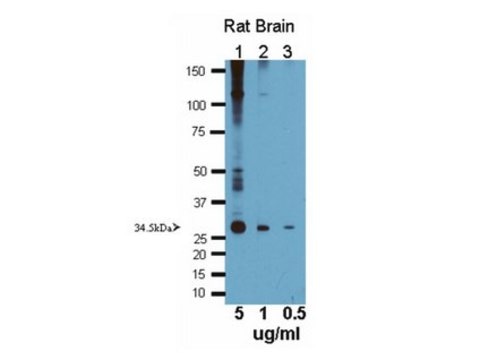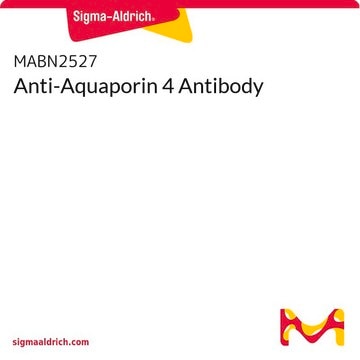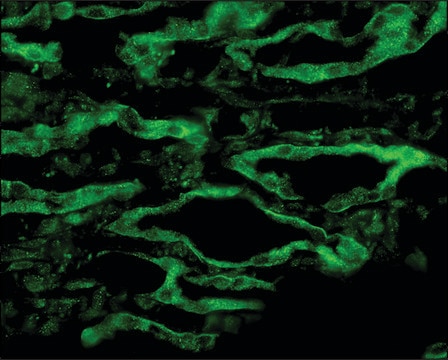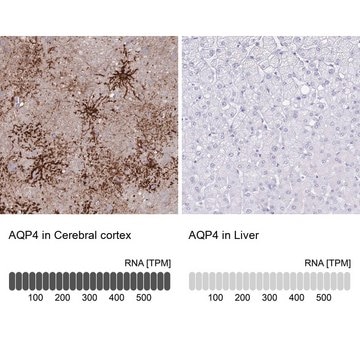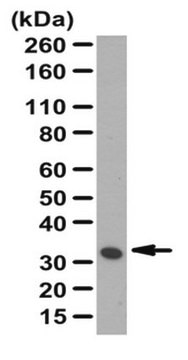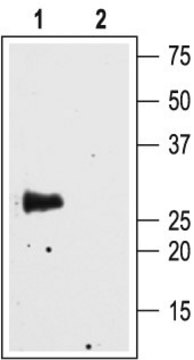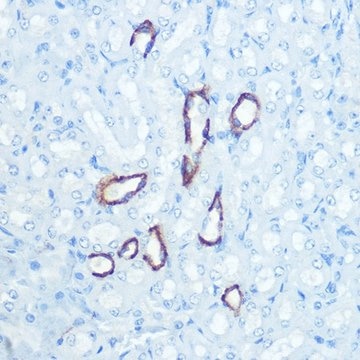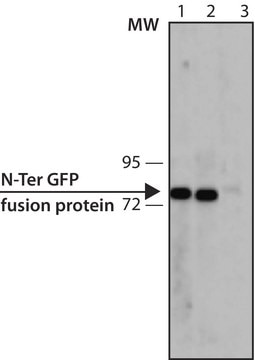Recommended Products
biological source
mouse
Quality Level
conjugate
unconjugated
antibody form
purified antibody
antibody product type
primary antibodies
clone
E5415B, monoclonal
mol wt
calculated mol wt 34.44 kDa
observed mol wt ~45 kDa
species reactivity
mouse
packaging
antibody small pack of 100 μg
technique(s)
ELISA: suitable
activity assay: suitable
immunocytochemistry: suitable
immunofluorescence: suitable
western blot: suitable
isotype
IgG2aκ
UniProt accession no.
shipped in
dry ice
storage temp.
-10 to -25°C
target post-translational modification
unmodified
Gene Information
mouse ... Aqp4(11829)
Related Categories
General description
Specificity
Immunogen
Application
Evaluated by Western Blotting in Mouse heart tissue lysate.
Western Blotting Analysis: A 1:500 dilution of this antibody detected Aquaporin 4 in Mouse heart tissue lysate.
Tested Applications
ELISA Analysis: A representative lot detected Aquaporin 4 in ELISA applications (Huang, P, et. al. (2016). Biochem Biophys Rep. 7:77-83).
Western Blotting Analysis: A representative lot detected Aquaporin 4 in Western Blotting applications (Huang, P, et. al. (2016). Biochem Biophys Rep. 7:77-83).
Immunocytochemistry Analysis: A 1:25 dilution from a representative lot detected Aquaporin 4 in mouse astrocytes.
Function Analysis: A representative lot reduced endogenous Aquaporin-4 in primary cultured astrocytes. (Huang, P, et. al. (2016). Biochem Biophys Rep. 7:77-83).
Immunofluorescence Analysis: A representative lot detected Aquaporin 4 in Immunofluorescence applications (Huang, P, et. al. (2016). Biochem Biophys Rep. 7:77-83).
Note: Actual optimal working dilutions must be determined by end user as specimens, and experimental conditions may vary with the end user
Physical form
Storage and Stability
Other Notes
Disclaimer
Not finding the right product?
Try our Product Selector Tool.
wgk_germany
WGK 2
flash_point_f
Not applicable
flash_point_c
Not applicable
Certificates of Analysis (COA)
Search for Certificates of Analysis (COA) by entering the products Lot/Batch Number. Lot and Batch Numbers can be found on a product’s label following the words ‘Lot’ or ‘Batch’.
Already Own This Product?
Find documentation for the products that you have recently purchased in the Document Library.
Our team of scientists has experience in all areas of research including Life Science, Material Science, Chemical Synthesis, Chromatography, Analytical and many others.
Contact Technical Service